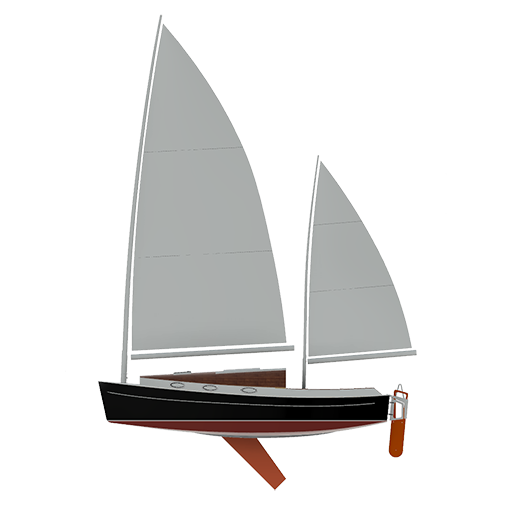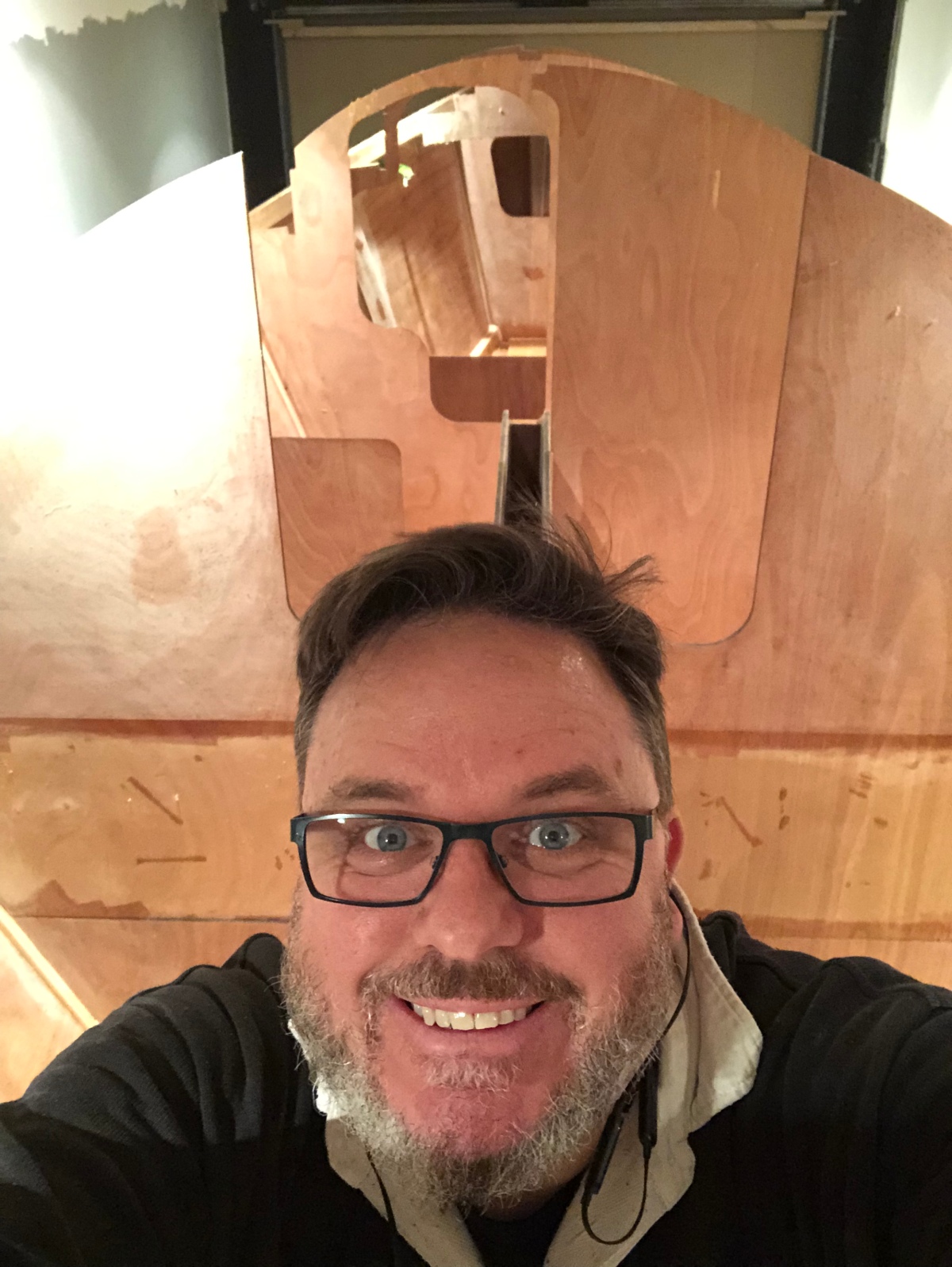My name is Paul Atkins, I am director of a family business that was formed in 1936, I began working for my grandfather, and worked with my father John until recently, and I now work with my wife Kate.
The business is called Atkins Photo Lab and is based in Kent Town, on the verge of Adelaide’s square mile and park lands.
I am married to Kate a highly talented graphic designer now the creative director of Atkins Lab, and have two children Elizabeth and Josephine.
I like boats. Big time.



14 replies on “About me”
Paul
I just want to thank you for your blog. As you may know from the forum I am building a NIS 18 stretched a foot. At this point I am just a bit behind you, but as I am able to spend 20-24 hours per week, will soon be moving ahead. My wife just died recently which gives me added incentive to work on the boat to occupy my mind.
Meanwhile your recent blog alerted me to be extra careful as I am also installing the chines and sheer strip.
Your stem fitting by the way looks very nice. Mine is more sloppily done, which is okay because I don’t mind using a little more epoxy to make up for bad craftsmanship; nonetheless I appreciate good work when I see it.
Dan
Thank you Dan, lovely to hear from you. I appreciate the kind words.
Sorry for your loss, you have found a great distraction in boat building.
I have read a great deal about the under-currents in boat building and what it can do for you. I have one really nice boat as a result of a break up. I am not a religious or mystical person, but I think launching a boat you made is a pretty ‘awesome’ experience.
Robert Ayliffe was featured in Wooden Boat many years ago in a article entitled “Boat builder as Shaman” (WB issue #103, pg 64), it says it all.
Keep in contact, I’d love to talk sometime.
Paul
Hi Paul, glad to hear your going well on your NIS. After reading Klaus’s experiences in loading up the his 26’er with water and fuel for extended kimberly crusing and her bum draging as a result, I have rekindled an idea of installing water tanks to act as (partial) ballast and providing built in potable water storage. I just spent the last couple of months wrestlng out 2 x75kg lead ingots that I had epoxied into the boat (Ive gone for internal ballast within the rounded bottom section) and have now just received my two plastic water tanks that I will build and plumb together to hold approx 190ltr/kg of water. Gives me flexibility for ballasting/trim, drinking water and I can drop it at the ramp reducing 200kg off trailor weight. Just sharing a thought for when you get to that point.
All the best
Austin Rogerson, Albany WA
Hi Austin, great thoughts. I will definitely review the ballast water idea. Can you provide details on where and how you intend to flood and drain these? Thank you!
Hello paul l have inherited a 26ft sharpie which my father and afriend built in his backyard.Since am not much of a sailor I have removed the aft mast.The forward mastwas made of laminated boards ,this mast eventually broke off at about 16 feet.This mast was 37ft long,not bieng much of a carpenter I cut down a spruce tree down and trimmed it down.This mast fit down into a 5in pipe but I trimmed it a bit too much,so I put wodden wedges in the pipe to take up the slack.This mast lastedabout 5yrs,when it broke off it was as if someone had cut around the mast with a saw to adepth of about 1.5 inches,where the fibres of the wood had broken.I have since cut down another tree for another mast and will be a bit more careful trimming it down one foot done only 36ft to go.I use wodden hoops to tie my sail to is there a plastic alternative which could clip into the sail do away with tying the wodden hoops.Living inCanada makes it easy to cut down a tree the woods are full of them
Wow you are doing it the traditional way! Congratulations on your ingenuity.
How does it handle?
Hi Paul.
My name is Dan. I have a boat hire business in Sydney http://www.anyboat.com.au. A client asked today whether we had any self drive sailing boats similar to an NIS. To be perfectly honest I had no idea what he was talking about so did a Google search and found your site. After working in the boat hire / boat charter industry so long I was surprised to have never heard of such a boat.
Obviously I am unfamiliar with these bots so do you know of anything similar? Have you heard of any NIS’ in Sydney? Or are they purely a niche Adelaide boat?
Thanks so much for your help.
Hi Dan, you need to get in contact with Robert Ayliffe from StrayDogBoatWorks (http://nisboats.com/straydog/). He sells the kits and also has a wide understanding of what you are seeking.
Best of luck! Thanks for the question.
Hi Paul. Nice site and excellent craftsmanship. I’ve started a blog in the US about building inexpensive sailboats for novice builders. These designs are far less attractive and not nearly as seaworthy as yours, but they work. I hope to get people involved in boat building as a hobby. In the meantime, I’m getting familiar with the boat building community at large.
If you’re curious about minimalist boatbuilding, I welcome you to take a peak.
https://ottosboatyard.wordpress.com/blog/
Regards,
-Nate
Hi Nate,
thank you for your comment! I did enjoy reading through your posts.
I am sure you will drift to either boat design or building professionally designed boats. There are immutable rules that take a lifetime to realise are important, I love looking at great designs and reading why and how they work. Mike O’Brien of Wooden Boat has wonderful commentary on boat design.
I got lost following that white rabbit for many years, I discovered the great traditionalists such as Herreshoff (all generations) and fell in love, then was challenged by Michael Storer, Ufa Fox and Phillip Bolger simultaneously, and was spat out at the feet of Bruce Kirby and Iain Oughtred.
Boats are the ultimate design challenge, it is so incredibly academic and yet with centuries of local use some of the best designs arise.
Enjoy your journey!
Dear Paul, Thank you for creating such a phenomenal blog for those of us who love boats.
Can you tell me more about your Whilly Boat? Did you need a special plan for the mizzen? Could you sleep in the cockpit? I am short, 5’4″ tall, and I’d like to know whether I could sleep on floorboards between the C/B case and the boat side. Would this be a good boat for a camp cruiser for one person? Look forward to hearing from you.
Hi Steve, sorry I missed your comment/question. Thank you for your kind words.
The sail plan was designed by Michael Storer, I really wanted a mizzen as it makes handling the boat alone super easy. I also wanted to be a member of the Canoe Yawl Association, a bit of fun that never got past the secret handshake.
You could sleep in it if the center thwart could be removed, it’s just too tight under it. I have done quite a bit of camp cruising in mine. It increases stability significantly with weight, so loading her up is what she is built for. I chose to put in huge hatches in the buoyancy tanks to feed down a tent and sleeping bag. I had dreamt of sleeping in a hammock between main and mizzen masts, but I also pictured the leverage flipping everything!
I’ve journeyed with four aboard on multi day trips, and that was way too much weight, two is maximum sensible. But we did it.
I cannot speak highly enough of Oughtred’s boats. He has revised the Whilly into the Ness, hardened up to chines and lifted the freeboard. All of these changes will make it much more sea-kindly. As it is, she is a bit wild and requires a sharp eye for gusts and a deft hand on the main and rudder. Do note, the rig I have is a little too big, and I should reef more, and reef sooner!
Good luck!
Hi Paul
I’ve just purchased a Whilly boat and am keen to change the rig from a gunter to a lug yawl, would you be willing to share the dimensions of your rig? Info such as mainsail dimensions, foremast position and rake, mizzen mast position and rake, not sure that I would have the mizzen as big as yours, but would still have same length on the foot and shorten the luff. It appears in the photo’s that you run the mizzen sheet to the top of the rudder, would that be right? I’m not worried about the tiller dimensions at this point as I’m thinking of running with a push pull tiller, what are your thoughts?
Cheers Dave
Hi David, love to help. I can sift through my records, but it may be easier to reach out to Michael Storer who prepared the plans for my rig: https://www.storerboatplans.com.
I am a big fan of the push pull tiller, and will one day convert mine to that. The idea of having a built in tiller extension is attractive too. Also the curved tiller can fall away and get stuck over the side putting you into a circuit. It’s a weighty bit of laminated wood.
Yes the mizzen sheet comes off the head of the rudder. The only inconvenience is the method of attachment I selected the block is held on by a line through the head, and does not allow the tiller to be shipped while that sheet is set up. I suppose it is protective of the tiller, but frankly it is a bit clumsy. Also my block tumbles to the side jamming things up a little. In all these years I’ve only thought about solving these problems!